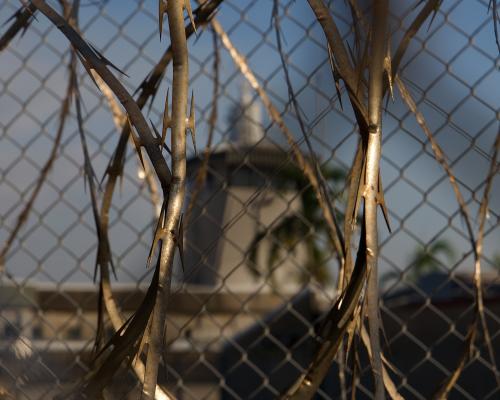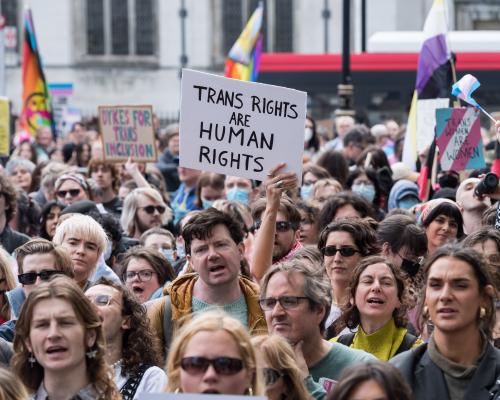
“We expect the usual offender apologists to criticise our efforts”. So said the Northern Territory’s chief minister, Lia Finocchiaro, in an Instagram post this week announcing her Country Liberal party government’s newest changes to the NT’s youth justice laws since coming to power in August.
The most notorious among the CLP’s third set of amendments to youth justice laws in under a year is the reintroduction of spit hoods, now to be called “anti-spit guards”, into youth detention centres including Don Dale. Spit hoods became emblematic of what a royal commission found in August 2016 was a system in which children were verbally and physically abused and humiliated contrary to international law in prison-like youth detention centres that were unfit for accommodating children, let alone rehabilitating them.
Among the critics of the reintroduction of “anti-spit guards” have been Mindy Sotiri, executive director of the Justice Reform Initiative; Karly Warner, the chair of the National Aboriginal and Torres Strait Islander Legal Services; and the NT’s own children’s commissioner, Shahleena Musk.
Are these leaders “offender apologists”? Finocchiaro wants to cast the CLP’s critics as people who are somehow accepting of terrible violence. In the same Instagram post, Finocchiaro justified these latest changes – which also include lowering the bar before force is used against children in detention, and broadening the kinds of force that can be used to include dogs – by referring to a shocking incident last weekend in which a 15-year-old boy was stabbed at the Royal Darwin Show.
The CLP’s pattern is now clear. The opposition leader, NT Labor’s Selena Uibo, called the newest amendments a “reactive, knee-jerk response”. But it’s more likely that they’ve sat in Finocchiaro’s “to be actioned” tray for some time. It takes time to draft laws, and these latest changes appeared just three days after the Royal Show.
In its first sitting week after returning to power, the CLP lowered the age of criminal responsibility back down to 10. And following a horrific home invasion, the CLP immediately tightened bail laws. Rather than rushed and kneejerk, the CLP’s trilogy of amendments to youth justice laws have been patient and opportunistic. They are consistent with an ideological opposition among many detention centre staff and corrections and police officers to the changes demanded by the royal commission into the protection and detention of children in the Northern Territory.
Most youth crime is committed by a relatively small number of children, some of whom commit an enormous number of offences. Evidence, in the form of research into this small cohort of repeat offenders and why they behave as they do, supports targeted, therapeutic approaches that aim to address underlying reasons and causes. The overwhelming majority of kids who offend have led extraordinarily traumatic lives. Often, they were victims of serious abuse and neglect long before they began breaking and entering, or hurting people. The evidence shows that reacting to these kids’ bad behaviour with violence (or “force”) and aggression simply heaps more trauma on existing trauma – and makes it more likely that the offending behaviour escalates rather than resolves.
People like Sotiri, Warner and Musk accept this evidence base. The reason they’re critical of laws that authorise reactive force rather than encourage therapeutic intervention is that they know such laws will only make the existing problem worse. But therapeutic intervention just doesn’t exist, even when it’s been court-ordered. When children who have been traumatised inside detention centres are released, they will be more, not less, likely to commit further offences. In stark terms: there will be more victims as a result of the CLP’s policies.
But the people who accept this evidence base are not the CLP’s constituents. During the last decade, non-Labor parties across the country have discovered a growing appetite among communities of resentment – fuelled by online echo-chambers and shock-jock opinionistas – for reactionary approaches that get tougher and tougher on criminalised kids, and that blame what it calls “soft” approaches by governments more interested in the evidence. (Finocchiaro herself talks about the “soft, offender-first policies” of her Labor predecessors.)
The CLP was the first to ride this wave of reaction into power. The Liberal National Party in Queensland was the second, in October, by promising what it called “adult crime, adult time”. Ironically, most of this crime is more accurately characterised as juvenile, in the sense that it’s perpetrated by kids and young adults with damaged or under-developed pre-frontal cortexes.
But it’s politics and ideology, not evidence, that guide what we might call the “Northern approach” to youth crime, following the united approach announced by Finocchiaro and Queensland’s police minister, Dan Purdie, after he visited Darwin this month. No doubt we haven’t seen the last of its regressions.
-
Russell Marks is a criminal defence lawyer and adjunct research fellow at La Trobe University. His latest book is Black Lives, White Law: Locked Up and Locked Out in Australia (La Trobe University Press, 2022)





